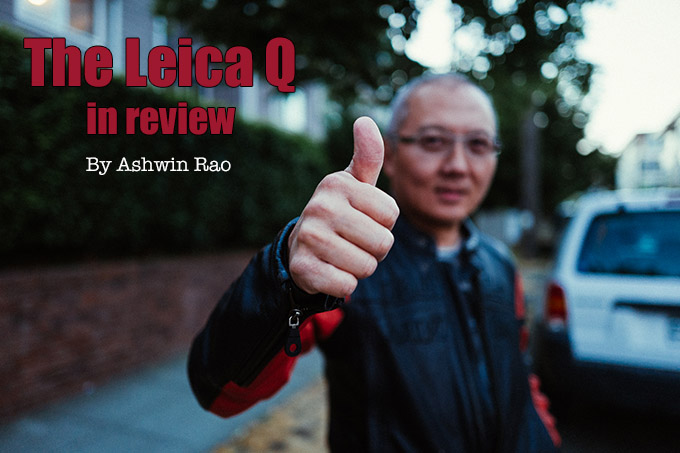
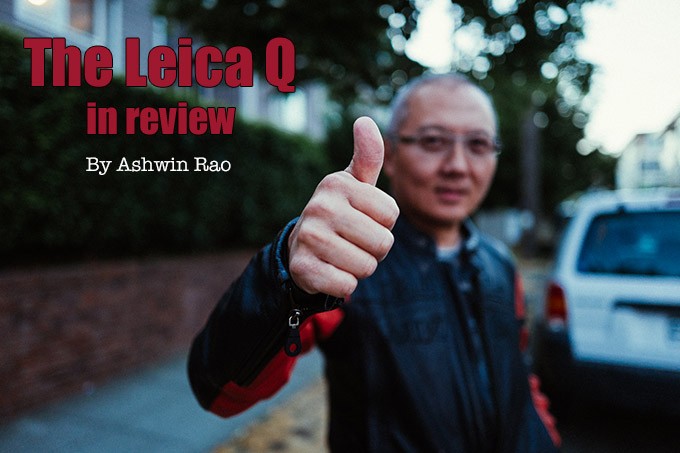
The Leica Q…in Review
By Ashwin Rao
Buy/Order the Q from Ken Hansen, PopFlash.com, or B&H Photo.
Let me just start by saying that the Leica Q is one of the most engaging, inspiring cameras that I have owned to date. I would also suggest that it is this decade’s version of the legendary Digilux-2…read more below to understand why….
If that’s all that you take away from the review, that’s great. An educator once told me that you should say what you are about to say, then say it, and finish by saying what you jyst said. With this article, I intend to proceed as such. The Leica Q is a great camera… Even at it’s price. Even though it’s not a rangefinder. Even though it’s unlikely to be a Leica through and through. It’s capable of harnessing one’s spirit, capturing the decisive moment, and challenging the photographer all at once, all in the most facile of ways. See there you go, I have gone and said it again, in a slightly different way. Okay, now getting that out of the way, let’s dig deeper.
Hello, my friends and photographers. By now, many of you have read the glowing reviews that came alongside the announcement of the Leica Q. Such luminaries as Steve himself, Jono Slack, Ming Thien, Sean Ried, Michael Reichmann, and others deconstruct, reconstruct, and then deconstruct the camera again. I am not here to re-hash this territory, other than to say that I agree with much, if not all, of what these reviews have said in their uniform praise of the Q. I am here to give you my own impressions and take on the camera, it’s build, its DNA, it’s capacities as a tool for photography, and it’s operation, and I have now had the chance to spend a bit more time with the camera, having been one of the first lucky few to have received my camera from the Leica Store Bellevue.
For those of you who have not read the reviews, here’s the low down. The Leica Q is a fixed-lens autofocus, Leica M-styled camera that’s not an M camera at all. It’s built to an incredibly high standard and sports a 24 MP full frame sensor and a fast 28 mm f/1.7 Aspherical Summilux Lens. It sports an industry leading 3.7 megapixel non-OLED EVF with a solid refresh rate (read not many shuddering images while moving the camera through the scene) and a design that allows for easy use even with glasses on (thanks for thinking of us old folks wearing glasses, Leica). It’s not weather sealed. It has a mechanical leaf shutter that moves from 1+ sec through 1/2000 sec, after which an electronic shutter kicks in, capable of achieving shutter speeds as high as 1/16,000 sec (thus, there is zero issue with shooting wide open in the brightest of daylight settings). The leaf shutter is nearly silent in and of itself, and the camera is thus very operationally discrete, while obviating issues such as shutter shake. There’s no built in flash, but this can be added via hot shoe. It records video, for those who care about video (I don’t). It’s layout is very simple. 5 buttons to the left of the screen, and a click wheel to the right. There are only 2 other dials up top, one for shutter speed and one to adjust exposure compensation, which is not marked. There’s the On-off toggle switch, which houses the shutter release. Oh yes, that video button (I don’t use it, unless I inadvertently push it). The awesome 28 mm f/1.7 Summilux lens has a very “M-lens” like feel, with a hood that echoes the most recent Summarit line. The hood screws on, once you remove the included protective retainer ring. The focusing tab on the ring allows you to easily focus manual, as the lens has a nice, shot focus throw, but also readily clicks into full AF mode by turning the barrel fully counter clockwise until it clicks into place. There’s a macro ring, that can be turned to enable a lovely macro option, that allows focus between 0.17 and 0.13 meters, while the standard non-macro setting focuses between 0.3 meters and infinity. The menu system is very clean and simply laid out, more so than even the current generation of M digital cameras. The screen is a touch screen, and one can use finger touch to set focus if desired. In image review mode, images can be swiped or pinched to allow for zooming or image review. Finally, there’s a small unmarked button on the back of the camera just below the shutter speed dial, that allows you to enable 35 mm of 50 mm “frame lines”, basically a digital crop for those who wish to use the camera at “other focal lengths”.
These are details that most of you already know, but I wanted to summarize it all in one place. With that summary out of the way, let’s dig deeper.
Colors
The Leica Q offers a moderately different color palette than either the Leica M240 or the M9 before it. Leica has not announced from whom the sensor comes from. I have my theories, and will get to that later in the article, but suffice it to say that colors are punchy even for out-of-camera DNG files. Unlike the muted palette of the M9 and M8, there’s a lot more color pop up front from the Q, which can take some adjustment. However, once you get adjusted, what you are left with is a camera that produces some of the best colors seen in Leica land.
I struggled mightily with skin tones and colors when attempting to use the M240 during my brief sojourn with that camera. Suffice to say, I was quite concerned about a “repeat performance” with the Q, but thankfully, this is not the case. For those of you who enjoy the M240’s color palette, prepare for a different experience. Same goes for you who preferred the M9 color palette. However, I must say that many of us M shooters who enjoyed the M9’s color palette may be quite pleased by what the Q offers.
At times, skin tones can drift towards an “orange” bias, but this is easy to fix in Lightroom or other similar applications when encountered. Fact of the matter is that most of the time, colors coming out of the camera properly represent the color palette of the scene. The camera is nicely transparent in this ways. Auto white balance does great outdoors, slightly less so indoors, but this too is easily correctible during editing, and truth be told, most of the time, colors under incandescent or fluorescent light are appropriate.
All in all, the camera performs very well in this department.
ISO performance
Let’s get this out of the way. This camera is middle-of-the-road for full frame ISO performance. It’s totally adequate and appropriate in the ISO department through ISO 6400, but once ISO 12,500 is reached, things can get a bit iffy, particularly if processing heavily. If properly exposed, you get a very useable file through 12,500, but in general, I would hesitate going any higher, due to noticeable horizontal banding that is encountered within shadows. But with a fast lens attached at f/1.7, I rarely felt challenged by any low light limitation. While the Q is no Sony A7s, it stands up quite well to the Sony A7 and other cameras considered to be low-light stars or keepers of the night.
Image quality
The image quality coming from the Leica Q is astounding. The 28 mm Summilux is capable of achieving incredible detail, while producing a pleasant, non-distracting, painterly out of focus. If I were rating bokeh, as I have in the past, the Q’s 28 mm Summilux rates as a 9/10. Images are nicely sharp, particularly in the center, at f/1.7, and by f/4, the images sharpen up from corner to corner. I suspect that the lens produces a slight curvature of field that contributes to softer edges on plane when shooting brick walls, but in real world application, this slight curvature of field may actually enhance subject isolation (for aspects of the image that are in focus) while creating a 3 dimensional effect, which can be very pleasing even for a lens this wide. Coupled with a fast open aperture, the whole image is rendered beautifully. While I will leave it to others to do ISO test and aperture comparisons, I will say that the Leica Q has simply never let me down in the image quality department. Coupled with the color performance of the sensor, the lack of an anti-aliasing (AA) filter, the Leica Q becomes a powerhouse, if judged only by the retina-searing quality of image that it produces.
The 28 mm lens
did Leica use a 28 mm lens? For many, 28 mm is too wide. It is nearly impossible to get a portrait shot, and if you do, you’ll get a ton of distortion, and your subjects will be mad at you, unless you step back a few feet.
Leica states that the 28 mm lens was designed in-house with a goal of allowing those who chose to use the camera a great option for street and reportage photography. While I think some of this is marketing know-how, I do feel that the 28 mm lens may well have been chosen for a few other reasons. First, the camera’s implementation and design makes it clear to me that Leica’s positioning itself for both its base (aging shooters with progressive vision deterioration), alongside a younger customer base with money to spend), bringing the camera’s operational capacities into the 21st century, with amenities such as wifi, NFC, phone apps for teathering, and a touch screen. 28 mm is exciting to the Leica base, as a lens that offers great opportunities for street and reportage photography. 28 mm is a popular focal length particularly popular with many shooters who don’t even know it: cell phone shooters. The iPhone, for example, has historically employed a 28 mm equivalent lens. It’s a great option not only for street photos, but for selfies, for family outings, for gatherings with friends. It’s the focal length that’s social-media savvy, and Leica knows it.
Second, Leica is trying to establish a branding identity and a sense of novelty in the market. Never has a fixed full frame digital camera been released with a fast-wide lens such as the incredible 28 mm Summilux. Most people who have shot the Q or thought about the purchase wonder: why not 35 mm or 50 mm for the lens? Leica saw the success of the Sony RX1/R with it’s 35 mm f/2 Sonnar lens, and saw an opportunity to make something similar, yet slightly different, to separate it from Sony’s past offering to which the camera is most often compared, as well as to any future RX2, which is likely to come sporting some of Sony’s latest and greatest tech.
The lens does include a separate ring for macro photography mode. One turn of the inner most ring into “MACRO” allows the camera to focus (manual or AF) between 0.17 m and 0.3 M. In fact, turning the ring procures a separate focusing scale, which is hidden from view when the camera is used in standard operation. This feature is incredibly handily when shooting near-field objects (think food photography). The implementation of the MACRO ring itself is one of the camera’s few weaknesses, as it’s a bit hard to turn the ring when desired. Maybe that’s by intention, but it feels that the ring could have been designed for smoother operational execution.
I also suspect that Leica introduced the 28 mm lens, as it may have been particularly adept at working with the sensor that they are using in the camera. I find it incredibly fascinating that Leica is choosing not to disclose the manufacturer of the sensor, but here again, I have my theory, so read on to find this out . Ultimately, I suspect that to some degree, lens and sensor were designed with one another in mind, and the performance of the lens-sensor combination in the Leica Q is astounding.
In hand
I find that Leica Q’s haptics to be fantastic. I have been using the camera since day one with the accessory handgrip and attached loop. The grip and loop make the camera very easy to hold steadily, with confidence and no fear that it may slip out of hand. The Q itself is a slightly airy camera, clearly lighter than the M line, but with the added grip, there’s an addition of slight heft that gives the camera more confident feel. Without the grip, the camera is truly a bit slippery, and the thumb indent that Leica added is positioned to far to the far edge of the camera to permit comfortable hand holding. The grip fixes this issue. ‘’
The camera’s edges are nicely rounded, and unlike the Leica T, with it’s more angular build, the Q does not seem to cut into skin as much. The Q is substantially heftier than the T series and it’s girth and bulk will feel quite familiar to users of the M system. Some may raise concerns that it’s not nearly as compact as Sony’s RX1/R, but then again, I think Leica made the proper choice in proportioning the camera as a Leica M to attract its base of M camera users. To the Leica M shooter, the camera will feel “familiar” in hand.
I do wish Leica would use traditional vulcanite leatherette, as the pebbled texture of Vulcanite used for older M cameras truly enhances the photographer’s hold on the camera. The Q comes equipped with a grip that may be familiar to X camera owners. It’s not as tactile, and looks decidedly more modern. It’s a decent look, but one that could use refinement.
With the accessory grip added, the camera’s haptics feel more complete. It’s heft is pleasant. The grip firms up the hold on the camera.
In operation
It’s at this point that I will begin to GUSH about the Leica Q. Leica (and Panasonic) did their homework on this camera, and it shows. The camera is truly a dream to operate. The menu system is well laid out, complementing the camera’s operational simplicity. In fact, this is a camera that one can pick up, figure out within a few minutes, and begin shooting happily. It produces RAW files in the DNG format, thus immediately portable into most photo editing applications (in my case, Adobe Lightroom)
Autofocus is fast and accurate. This has not been talked about in glowing detail, but deserves to be highlighted. In my experience, the Leica Q has the most responsive autofocus of any mirrorless camera that I have tried. Not only is AF responsive, but also focusing is accurate. The Q gives the photographer the brilliant option of setting the focus point anywhere on the screen, and this system works well when the photographer is permitted the time to set the focus point (be it center or off to the side). Once focus zone is set, the camera nails focus every time. For many of us whose eyesight wanes with each year, having a camera with accurate and responsive AF in the design/build of a M camera (yes, not an M, but it sure feels like one, doesn’t it?) is a marvelous thing.
While most of us will use the camera in single-shot focus mode (AF-S), the camera is quite adept at tracking focus if using the AF-C mode. Whole it’s not a sports shooter, it can easily track faster moving children and nail focus. The camera can be set to single- or multi-shot modes, and can acquire up to 9 frames in a second using the high speed burst rate. I was suitably impressed while employing AF-C with a high burst rate, while capturing fast moving children on a slip-n-slide, for example, to feel that the continuous AF mode coupled with burst shooting would allow me to capture a “mobile” decisive moment opportunity .
Using the lens in the field is also great. One can easily click into autofocus mode if one chooses, but one can also use the manual focusing option by rotating the focus wheel out of the AF position, at which point the camera uses focus magnification and peaking to aid the photographer in achieving focus. Coupled with the camera’s magnificent 3.7 megapixel EVF, focusing is not challenging. Added to the mix is diopter control, allowing the operator of the camera to adjust the diopter to his/her liking.
Menu layout is clear, clean, and intuitive, and the LCD screen can be used in broad daylight without much difficulty. Some may sight that the camera does not possess an articulating LCD, but this stands against Leica’s simplicity-is-utility design ethos, and I am fine with it. The less fiddly the camera, the better, in my opinion. With a clean user layout, and clean menu structure, operational simplicity, and very fast autofocus, what we are left with is a camera that is incredibly inspiring in operation. The Leica Q is a camera that simply does not get in the way of the photographer’s experience. I would say that the Leica Q’s operations enhance photographer’s user experience and motivates and inspires those who shoot it…to shoot it more. It’s that good. Really!
Crop Mode
I wanted to discuss crop mode briefly, as most simply cast this “feature” aside when discussing the camera. I belive that Leica considers the crop mode to be important, or else they would not have included a dedicated button to enable digital cropping. Implementation of the crop mode is fantastic. By clicking the button once, the EVF is “enhanced” by frame lines, thus producing a very rangefinder like experience. Shooting in 35 mm produces a 15 MP image, which is plenty sufficient to adjust in processing. Given that 28 mm and 35 mm are not that far apart, the camera can be used quite comfortably in 35 mm crop mode without much loss of feel.
Once cropped again, into 50 mm mode, things get a bit murkier. Now, the file produced is digitally cropped down to 7 MP. Editing becomes more of a chore, since less of the image is present to work with. Further, distortions present due to the 28 mm effective field of view are introduced, making portraiture in the 50 mm crop less than ideal.
I suspect that Leica envisions a certain group of photographers using the digital crop button to permit the camera to be used as a “Tri-Elmar” , but the compromises at play, while seeming acceptable at 35 mm, are less so at 50 mm.
All of that said, it’s nice to have a digital crop when operating the camera. Further, it’s nice to know that the camera has saved the full 28 mm field of view in the RAW file, so it’s easy to reclaim “lost data” in post processing if needed.
Compared to the RX1
Herein lies another question that comes up often, since the Leica Q was introduced. What’s Leica doing that Sony was not doing 2 years ago, when the RX1 was introduced and made its splash? Should I get the RX1 for it’s more desired 35 mm lens?
The choice of lens is a very personal. I would say that for those who don’t enjoy wide-angle photography and prefer 35 mm to 28, the Leica Q may not be an ideal companion. Further, the Q feels and is truly a bigger camera than the RX1, so if compactness is the ultimate goal, the RX1 achieves this better than the Q. Finally, image quality. The RX1/R produced and still produces brilliant files. This is no different today, and in fact, many, myself included, consider the Sony RX1 to be a modern legend in digital photography. Is the Q better? In a word: YES.
The fact of the matter is that the Q does so many things better than the RX1/R that the comparison is somewhat silly. The Q sports a built in EVF, which allows the camera to be used more like a traditional camera. Autofocus and operational implementation is far superior. The Q features a far more intuitive layout, with a less-is-more approach. While the RX1 is more compact, the Q feels fantastic in hand and retains enough compactness that it will fit in many of the same outfits for which the RX1 was purposed. Certainly, Sony’s RX2 (you know it’s coming) will feature a new degree of compactness, but Sony have never been known to design a camera for those who value simplicity and intention of use. Some complain that Sony cameras feel like computers. I don’t feel strongly, in this regard, but I will say that the Leica Q feels convincingly like a camera designed by and for photographers who appreciate simplicity of design. With the Leica Q, all of the key controls are readily accessible, while the rest are found easily in the camera’s sub menus.
Compared to the Ricoh GR
Ricoh produced the pocket dynamite Ricoh GR 2 years ago, and it’s truly held up to the test of time as a camera that many street and documentary photographers carry in the pocket. Like the Q, the Ricoh GR sports a 28 mm equivalent lens, albeit on a APS-C size sensor.
The Ricoh GR has been one of my favorite cameras, and it’s a camera that I have had by my side for 2 years. It’s a dramatically different camera than the Q, as it is much smaller and is truly pocketable. Thus, the Leica Q will not replace or supplant the GR for my purposes. It’s form factor is just too different.
I would say that the GR’s file quality is more clinical, with better edge-to-edge sharpness wide open than the Leica Q demonstrates even when stopped to f/2.8. However, the Q offers a full frame sensor, Leica’s operational simplicity and haptics, and a fast/remarkable lens.
Both cameras are great. Choose the one that fits your needs the best. I chose both.
Panasonic collaboration
Here’s the topic that no one’s really gotten into, and I wanted to shake a few trees and see what leaves fall down…Bottom line.: think it’s too much to say that Leica designed and implemented this most of this camera on their own. While the camera proudly reads “Leica Camera Wetzlar Germany” above the rear LCD, it does not clearly state “Made in Germany by Leica”, now does it? Nor does it say Leica Camera AG Germany. I say all this while laughing a bit, because none of it matters, other than in branding efforts. If you are reading this article, would you rather be buying a Leica or a Panasonic camera? I know where I’d fall in this regard
If one looks closely, the Leica Q has Panasonic’s fingerprints all over it. From implementation of the touch screen, to the wifi implementation, to the use of a Panasonic battery (DMW-BLC12) that’s been used extensively for Panasonic’s FZ1000 and Leica’s V-Lux line, this camera “reeks” of Panasonic influence. Heck, it’s clear to me that Panasonic had a strong hand in designing the Leica Q’s autofocus system. It’s too good to be a Leica design of its own. Some have gone as far as to say that it maybe Panasonic through and through, including the Summilux lens with an interesting f/1.7 maximum aperture, which is rare for Leica lenses but a common choice for Panasonic-designed lenses. Oh yeah, then there’s that sensor, which Leica refuses to disclose it’s source of manufacture, other than to say that the sensor is not manufactured by CMOSIS or Sony…Well, Panasonic is another company who sits ideally positioned, through its relationship with Leica, to offer up a chip of this high regard. Might not the sensor be of Panasonic manufacture? These are all of my theories, but ultimately, I suspect that Panasonic had a strong hand in designing the camera’s innards. From the outside, the Leica Q is truly, thoroughly a Leica, just like the Pana-Leica Digilux 2 before it….
Thus for me, the Leica Q is this generation’s Digilux!
I find the Leica Q to be a fascinating, thoroughly enjoyable camera, one that’s inspired new levels of creativity in me. I am truly fascinated by the camera and would easily say that it’s one of my favorite digital cameras of all time. It’s really a perfect, take everywhere companion. It’s incredibly well thought out, laid out, and implemented in a way to appeal to photographers who want their camera out of the way and photographers who want to grow into their photographer ever more. The Leica Q forces you to grow, and for that growth, you will be rewarded by fantastic images.
I hope that you have enjoyed the photos, all taken during my first week with the camera. For those of you who want to see more, follow this link to my flickr site:
https://www.flickr.com/photos/ashwinrao1/sets/72157654470404392
Enjoy the ride, and I will see you soon enough, just down the road, around the corner, Q in hand.

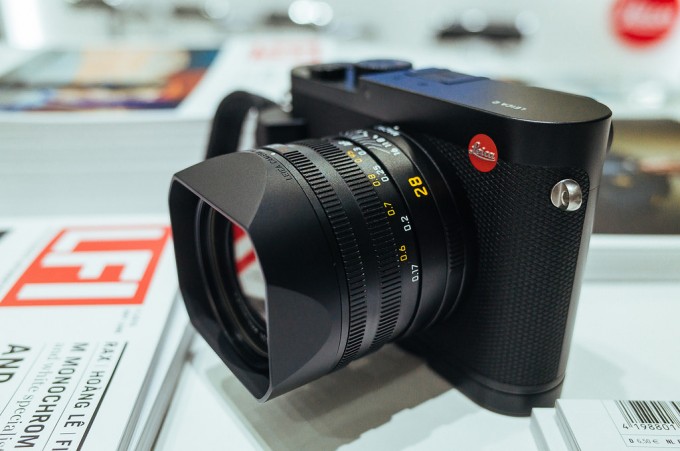
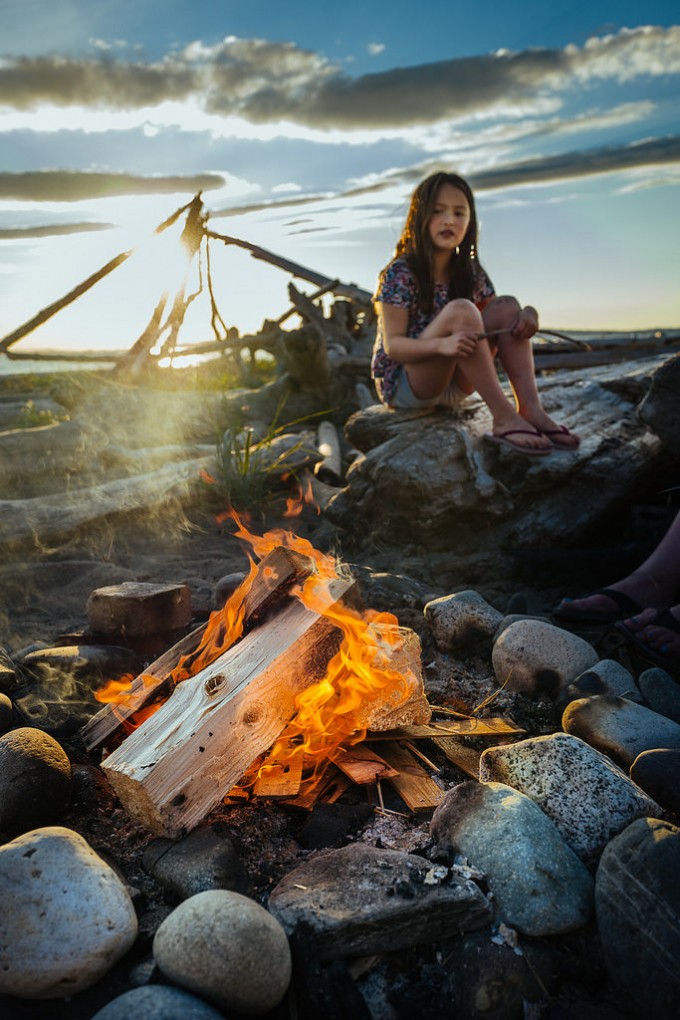
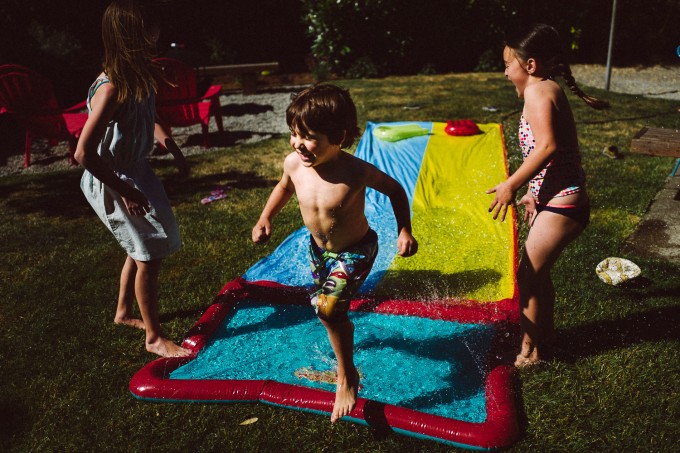


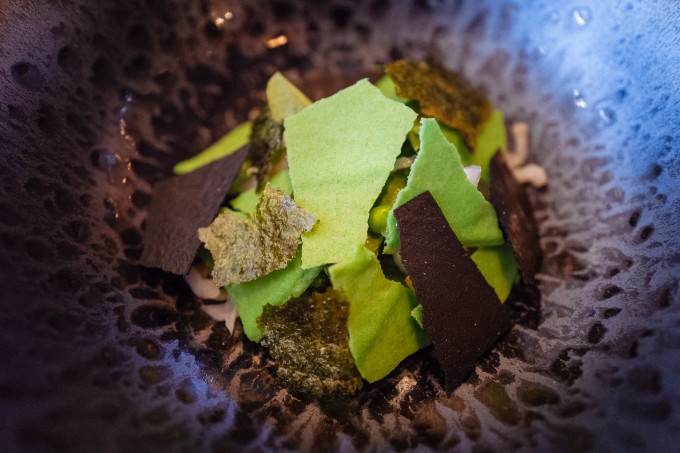

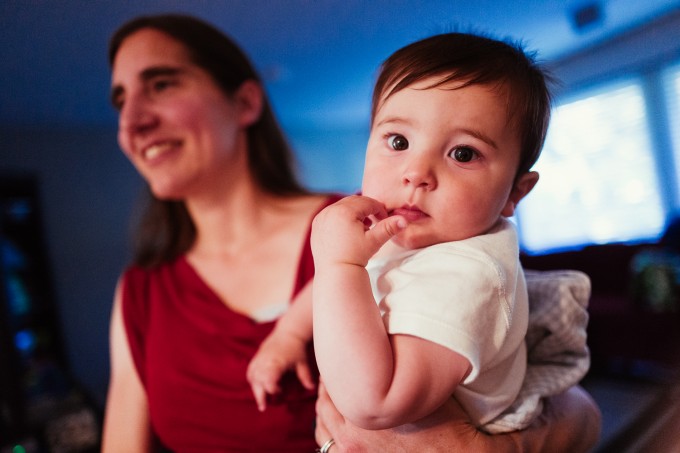

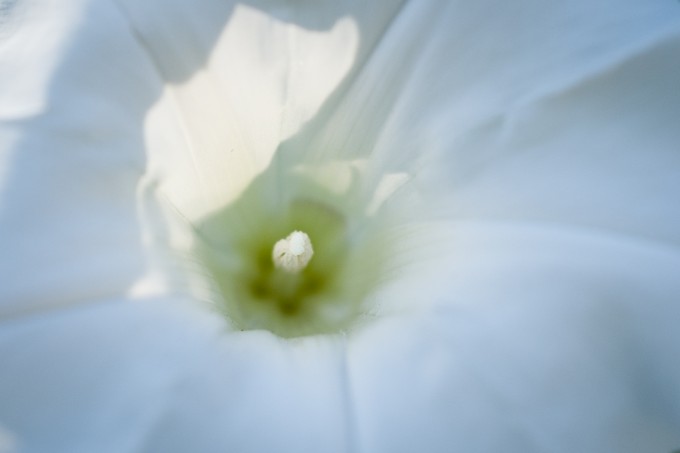
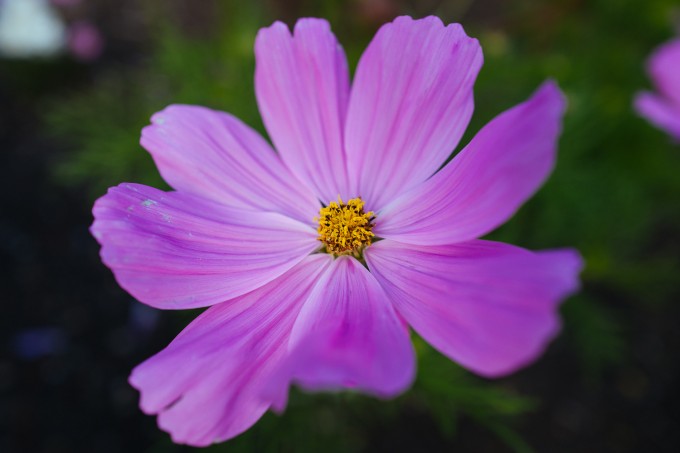

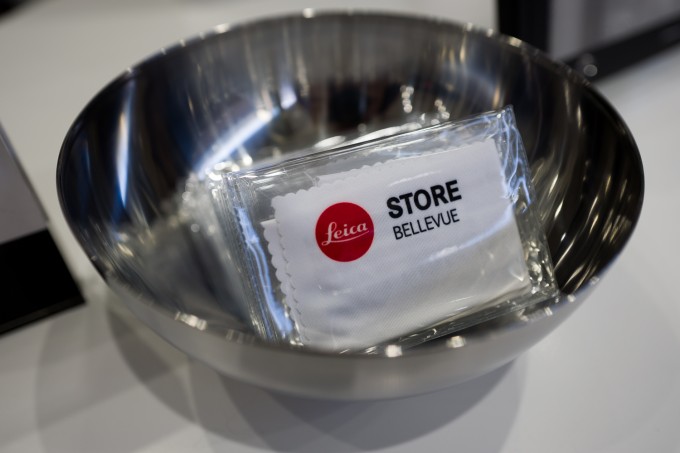
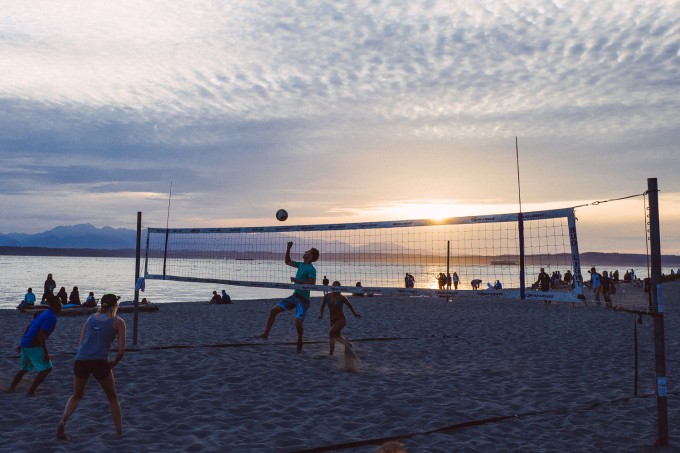
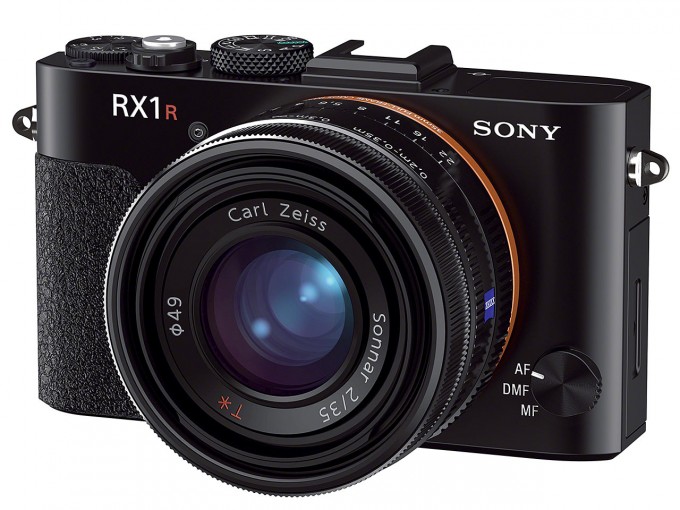

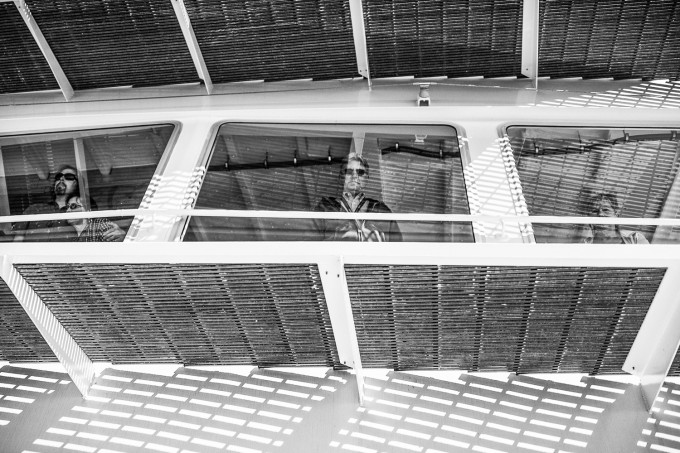
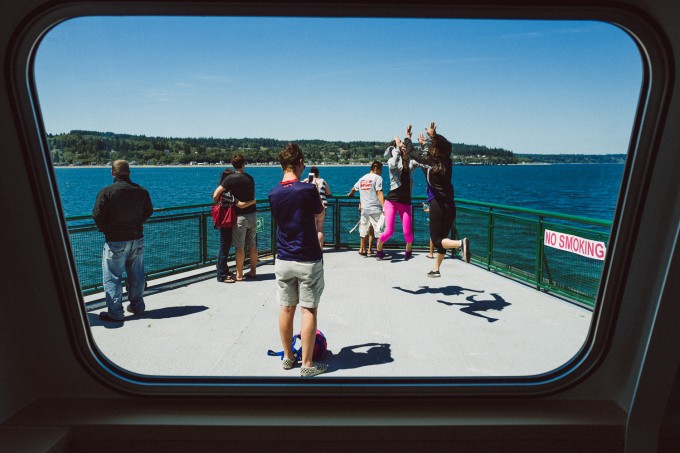
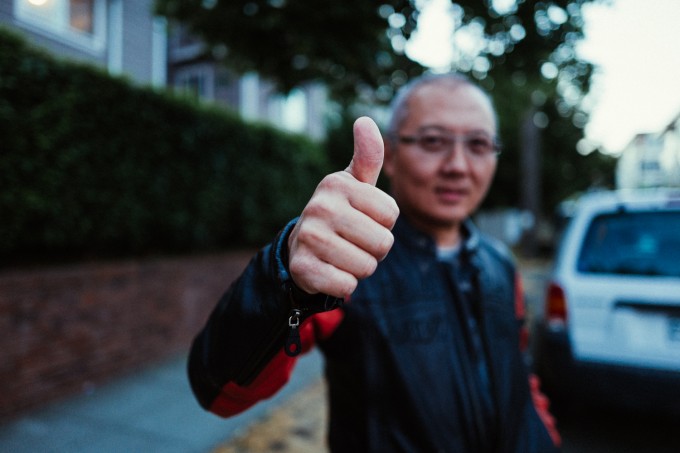




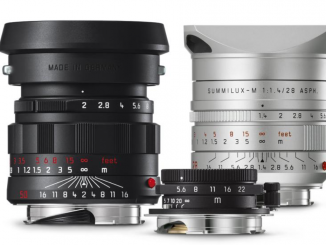
Hi Steve.
For me, the Oly was already in the film era a Leica for the price aware photographer. You will find a lot of resemblance between the two eco systems.
As for now, I own a Oly OMD10 body and a fixed 15 mm Pan f/1.7 Summilux lens. This is the first lens+camera combination that made me want to do photography in the digital era.
As you can see, it has a lot of resemblance to the Leica Q , and I was wondering if you every had the chance to use the pan 15mm lens and how it compares to using the Leica Q
Thanks
Yoram
Leica Q is a difference user experience. Minimalistic, but highly efficient menus and controls. A Europe-feel app. By contrast, Sony, for all its hardware quality, will really help itself to invest some time in design and software.
Great review Ashwin,
Having used a Panasonic GX8 and having used a Q for 6 months after testing it this summer, my impressions was also that many of the electronic solutions (AF and manual focusing aids, touch screen…) originated from the same P lab. As well as color profile of the sensor.
The camera is the best-designed camera I have ever owned. Easy and fast to use, very convenient, tremendous lens, smart close-up/macro function, very responsive, silent.
Totally in agreement about the marketing strategy and positioning vis à vis Sony. 35 mm is the typical M lens but Sony was already using it. Now, having a 28 mm f 1.7 asph. (and an amazing camera) for less than the new M 28 mm f 1.4… that is also a treat. Well-thought designed and produced Leica ! The Q has now replaced my M240 in 80% of my images.
Tremendous work and wonderfully informative website Steve! Congratulations!
Beautiful images and great review of an amazing camera… The files look impressive!
How long did you end up keeping it for then?
I heard you sold it already…
This is NOT a Panasonic. Nothing to do with Panasonic at all, 0%.
According to the Leica store here in LA, the camera is entirely made in Wetzlar, Germany, other than probably the sensor and maybe some circuit boards (which nobody but the big cheeses at Leica knows for sure). But it’s definitely not a PanaLeica. They didn’t even use their factory in Poland for any of the manufacture. Panny may have helped design the electronic controls though, perhaps.
I got a good hands-on with it, and it is really nice. Handles like a dream.
“Cropping that 28mm field of view is the very same thing as enlarging. Cropping that 28mm view really does decrease DOF. Really!”
It is like enlarging, but it is like an electronic zoom not an optical zoom. i guess you know about the principals. with the optical zoom DOF would change, with the electronic one they dont. So in this case you dont see any difference. Really 🙂
I think the next interchangeable lens System from Leica will have a lot in common with the Q, just a generation ahead of it. The differences to the current M System will be so dramatic that indeed the latest M never needed a number, because it will stay the the only M and a new System will be along its side. The M and the M7 will be for the rangefinder hardliners and the new System will mark the future of Leica. That is what i guess.
Lens designed by Konica Minolta, manufactured by Panasonic… Leica designed the appearance and camera assembly …. I may forsake my order
Something John seems to overlook is the the Q comes with an excellent 28 mm f 1.7. The prices he is comparing are a camera body (M) with a camera body AND a 28 mm f 1.7. By curiosity just look at the price of the new M 28 mm f 1.4 !
I have owned the RX1 almost since its release, and it has given me much pleasure and has produced some wonderful images. Truly, it is one of my all-time favorite cameras But the RX1 is not without deficiencies, which include sluggish AF, slow startup and the lack of an internal EVF (although some users prefer it that way). I do expect Sony to produce an RX2, which will have the latest sensor technology (possibly 36MP or higher), and will improve on all of its predecessor’s deficiencies. Also, it will have the same world class 35mm lens as the RX1. IBIS is a possibility as well.
It is good to remember that Sony wrote the book on miniaturizing FF digital cameras, so the RX2 is likely to surpass the Leica Q and cost considerably less. I strongly suspect that Leica went with a 28mm lens so as not to compete directly with an RX2, a battle that they would probably lose. Which is not to knock the Q, which looks to be a fabulous camera in its own right and is really the only choice if one wants a high end FF camera with a fixed 28mm lens. As for me, I will wait for the RX2, and if Sony does not deliver one, I will continue using my RX1.
WIth a complete set of M lenses, it may be worth investing in another M9, given the cost. I am a fan of trying new tech, so the Q was a good fit, since I have a M Monochrom on hand for my M lenses. It’s a tough choice. THe Q offers file flexibility, and great colors. The M9 offers the CCD charm, great base ISO with nice colors, and interchangeable lens in a body that’s a bit dated. If I were you, I’d probably get an M9 and use it
Ashwin, I seem to remember that you went back to an M9 from the M240. I never warmed up to my M240 and sold it when the Q was announced. But then I realized that I do like my old M9 files and I can obtain an M9 or M-E for about half the price of the Q, and use all my Leica and Voigtlander lenses. Then of course the Q has “the” new sensor, etc.. I’m sure I’ll get a new M360 (or whatever) at some point, but what to do in the interim? Any thoughts?
Nothing beats a GR for size, weight, controls, IQ for a camera at this price. Keep the GR and forget about the Q.
It will crop but it is doing just that, cropping. Same as if you cropped in software. So you lose MP and the full frame look/character when using crop mode.
Hi Steve,
Yes, 28mm will be an issue, but Leica Q still can do cropping 35mm and 50mm right? Since the IQ as a whole will be better, then i’ll get one and try to live with the wide angle.
Thank you Steve.
Well, will be MUCH different rendering, color, snap, contrast, detail, DOF, etc. 100% different from your 50L and 6D, and much lighter and smaller as well. IQ as a whole will be better – crisper, slide like color, super sharp, but make sure you are OK with 28mm, one and only!
Hi Steve,
I’ve been using Canon 6D with 50mm 1.2L Lens, the one and only.
As i can read from many photography website, most people believe that Leica will produce better Photo Quality compare to Canon/ Nikon.
Leica M-P 240 and APO 50mm ASPH caught my attention, but the very manual rangerfinder and very expensive investment make me think twice about getting one, especially when my wife doesn’t support me on Leica M as she afraid i won’t be in the photo itself anymore (coz most people won’t be able to use it).
So here comes the Leica Q, which is full frame and almost perfect for me except it’s 28mm. i thought 35mm will be better.
my important question here is that, will LEICA Q produce better photo quality compare to my current Canon 6D 50mm 1.2L?
if you say LEICA Q will HAVE better photo quality, then i will most likely get one and sell my old Canon.
I’ve been reading many forum and article about LEICA Q, but no comparison with my current camera.
I hope that you can enlighten me on this.
thank you very much.
Pure waste of money.
Ashwin – great review as usual. Went into Leica factory store in London today to get the ‘feel’ of the camera. Immediately found that the lens seems a lot heavier than the body (I use an M9) and the balance without a handgrip probably not great. You mention the need for a handgrip. I guess I thought this could replace my GR everyday camera but sadly by the time the handgrip has been added the package is too large for me.
Hi Algrove,
How do you compare the Q and RX 1?
Think I pass on this Leica Q and wait for its successor. Really love the concept, but having only a 28 mm on board puts me off. They should include a lens you can switch between 28 mm and 50 mm (and get rid of the macro toy function). Then you will be able to shoot portraits and street adequately.
Loving my Q apart from the banding in shadow areas which can be pronounced even at base iso if you underexpose slightly
I did selfies 30 ago with small 35cam and film. nothing wrong with selfies IMO, as long as we dont think we need to show our selfies all over the internet and bore other people with it.
Great to see the proliferation of these fixed-lens beasties! With optics optimized for the sensor and body, it is doubtful any interchangeable camera can match them. Sigma is to be lauded for starting the trend, though their implementation has been consistently imperfect :-(.
The Ricoh GR stands alone because of its size and extraordinary image quality. For me, it has negated the need for a 28mm lens except in low light. I’ll leave the Q to others.
If you check out the bottom plate of the camera you will find a print saying: “Leica Camera AG – Made in Germany”
Hate to beat a dead horse, but I think it’s important that I clarify. There is no “actual” DOF. It’s all subjective, with certain assumptions being made. A 50mm lens at 5 feet doesn’t have *any* intrinsic DOF. The number can not be calculated without making certain assumptions, enlargement being one of the assumptions. Cropping that 28mm field of view is the very same thing as enlarging. Cropping that 28mm view really does decrease DOF. Really! I’ve done some calculations using the Cambridge color calculator, and the cropped 28mm, although it has less DOF than the straight uncropped 28mm, the DOF is still more than the straight 50mm lens. In other words, the DOF will be in-between the two. See Bob Atkins site. He explains it well. http://bobatkins.com/photography/technical/digitaldof.html “First, DOF relates to a print or other reproduction of an image. It’s NOT an intrinsic property of a lens. If you put a lens on an optical bench you can measure focal length, you can measure aperture, but you can’t measure depth of field. Depth of field depends on some subjective factors which I’ll discuss later.”
Ashwin-Nice write up and well summarized. I like my Q too even though I have kept my RX-1.
Which is the primary reason that I can’t see see selling my RX1 and upgrading to the Q which is superior to the RX1 in many aspects. In my opinion, the IQ is everything and the Q just doesn’t exceed the RX1 in IQ to justify the expense.
+1, Hi Steve, I assume you will own both (if I remember correctly you did preorder the Q) in the near future. Shooting 28, which would be your preferred choice? Versatility vs simplicity – I definitely admire the Q but coming from a very versatile combo (D800 with 24-70) it seems I need a little push in either direction. I was shooting the F4 with a strange combo 20 & 85 but got tired long time ago of constantly changing lenses. Please make the push.
Hi: Ashwin, Great thread and review. I think too much is made about image color coming from any pro-level camera’s chip. It’s a digital file and if you shoot raw, you season the file to your taste. I’ve not had any color issues with either the M or M9 files, and I’m sure the Q, Canon, Sony, et.al. are just as malleable.
Thanks for an excellent review as ever -crazy as it sounds but I feel Leica is finally listening to its customer base. Myself and some friends mostly Leica shooters wrote to Leica some months ago asking them to leverage the synergies with Panasonic to produce a new quality Leica CL type camera with top class lenses -well they must have listened ! I suspect they have been getting this kind of feed back from all sides for a while now. They have some nice products now the new M mono the Q and not forgetting the T which is excellent in the design department.
If they at some future time were to incorporate a built in EVF rangefinder hybrid and Leica T interface with different sensor options into a future Leica M -well who knows.
We both share a high regard for the rendering of the M9 – I still use my M8 for black and white -but I certainly have to admit that Leica must move with the times as the M240 and the Q indicate.
Leica enthusiasts like myself and others here can be Leica’s best friends and worst enemies at the same time. I hope Leica can continue to produce film cameras like the MP and cutting edge cameras like the Mono and Q.
Enjoy your new camera !
Correct observation re saturation and contrast. Having taken now close to 500 pictures with my Q, I found that just like my Sony RX1, I needed to dial the exposure compensation up by ⅓ to ⅔ (in the Menu, that way you have it permanently set). Presto, takes care of both the slight over-saturation and contrast. Must be the nature of the full-frame sensors, at least on these two cameras. Steve Huff also mentioned it way back in his original review of the RX1 – I adjusted it at that time and the pics are perfect. (Re my RX1, for those of you who have not followed the two Q-related postings and comments, I am selling my lovely RX1 because for my hands and handling, it’s a bit too small, while the Q is perfect for me)
The Maestro-2 in the Q type 116 is using Intel format DNG, Little-Endian and stores pixels as packed values, 8 pixels across 14 bytes. The Maestro in the M uses Motorola Format DNG, Big-Endian. Such a change usually means a complete change in the processing architecture. I wonder how closely the Maestro-II can be to the original, I suspect a complete redesign – based on a different base processor.
Does Panasonic use Big-Endian or Little-Endian in their processors?
Hi Roger, personally, I’d be ab it carefuly about the Q, due to banding. THe Fuji sensors, Df, and GR do really well to avoid banding when pushing/forcing images into high ISO settings. Withthe , theres definitely banding at higher ISO’s, if you under-expose and try to save an image in post…but it’s avoidable with proper choice of camera set up appropriate to the scene. But definitely, somthing to be aware of.
Hi There, no I think they will release a 50 mm version of the Q if they are wise.
Hi Lucky, I would say that I totally agree. THe RX1/R holds up very well in the IQ department against the Q. In fact, I would say it holds up better to lifting underexposure, with less banding.
Great advice!
Hi John, you have it the nail on the head. Files are easy to tweak, with a satisfying post-processing impact (for me at least)
Thanks! I think Leica is listening, and hopfefully a Q50 will be soon to follow. After, they do have to recoup the R&D costs of the Q28 🙂
Thanks, Bruce. Totally agreed!
Congrats, Sergey. Youl will love the operational improvements of the Q. THe RX1R is still an amazing camera and should not be diminished. In fact, the Q may get people to pay attention to the RX1/R again, which is a very good thing.
Totally agreed, Retow, and thank you
I suspect we are all saying the same thing, just in different ways. Apologies for the confusion that this has caused.
I would be thrilled if a 50 were released. Leica, are you listening?
I would not say that the Q is for selfies, but for many, the field of view will be familiar, thanks to our selfie-cam generation of camera phones
I would say that if 28 is an issue, you should wait and hold off. IT’s a vastly different camera than the A7RII will be. This camera is tuned and suited for a very specific purpose….street and candid work…The A7RII will be the “one camera to rule them all”, if you enjoy Sony-style
THat may well be the processing that I chose….certainly my own fault here.
Outstanding IQ, strong color, don’t you think that the color rendering are similar with Dlux 109’s color? (but sure Q better as using different format).
Great review and pictures Ashwin , thank you. BUT I found the colour in the pictures too saturated and too contrasts , not nearly as nice as the colour coming from the X Vario ons X2 or X 113 ….
John, thanks for the input. i’ve been reluctant to pull the trigger on the x-vario for that reason. I’ll have to check out the X at the local Leica store (Tamarkin Camera in Chicago)
Agreed, the Q sensor is the CMOS sensor I’ve been waiting for and validates skipping the M240 for whatever comes next. Still though the Q and its 50 crop isn’t going to compete with an M9 and a 50 Cron for obvious reasons. I think the question any perspective buyer has to ask themselves is what kind of photographer am I and what kind of photographer do I want to be? In a perfect world you get both but if you can only choose one you have to decide if you want to be limited to a 28mm DOF at all times (as good as it is) or allow for the opprotunity to let your craft develope in any direction you see fit. I cannot wait to see how the Qs tech is implemented in the next wave of Leica cameras. I stand by my statement that it has some of the best looking digital images coming from it that I’ve ever seen from any camera in its short existence, it’s that good!
Thanks Ashwin. Between you and The Camera Store you’ve put a (actually, several) doubt in my mind. I was all set to let the Q pass by while waiting for the A7R II.
Issue for me is still 28mm.
I agree even though I also have been adding a Q.
(I like the lens signature, and I like shooting AF with the display for certain situations)
I dont believe that the Q beats the M9 or M with a good lens in regards of IQ (besides maybe high iso), plus for certain things an optical viewfinder is great, and the M gives you much more flexibility.
If I had to decided to one one of the 2 it would allways be an M with 3 lenses over a Q.
But the Q offers faster pace of shooting, is smaller and a very ice camera for sure.
Hah! Good, but I wasn’t talking about ‘acceptable’ depth of field I was talking about ‘actual ‘ depth of field – cropping doesn’t change it any more than zooming to 100% does.
But in practical terms of course you’re right.
The Q kills the M9 in every way..from IQ to sensor to low light to no issues with focus, etc. Id never take an M9 over a Q as it is much to limited, many are breaking down these days and the Q has even better IQ. The M 240, the Q also whips it in IQ and color performance, by quite a large margin. The next M..I bet it will have a modified Q sensor, as it should. If it does, it will be so freaking good.
I agree with you, Tim! I always shake my head and even smirk when I read such uninformed and ignorant statements. These days there rarely are real clunkers out there. The operating and quality issues are nuanced and what may be crucial to my way of photo operation or output may not be as critically important to you. But that does not make it a poor product for either of us.
the images coming out of my RX1 and A7R beg to differ but you know.. horses for courses
I’m with you on this. I preference for fixed lens FF cameras are public and I want to love this camera (it does look and feel gorgeous) but it just doesn’t wow me as much as the RX1 still does and there’s a little something about the images i’m seeing from the Q which, although I can’t put a finger on it, doesn’t seem quite as pleasing as everyone says it is. Let me play with one some more, it’s something I want to like straight away but can’t yet…
Hey Jeffery
Hope you don’t mind me throwing in my two cents but I would also suggest if you could spend 5k on the Q that you consider getting a used M240 and a Voigtlander lens to start off. I’ve seen used Ms going for $4500 or you could get an M9 and a used Leica lens, maybe even two. The Q image quality is spectacular but I don’t know that it’s so amazing that you pass up the opprotunity to shoot with multiple lenses. I’ve owned a Sony and rented a A7 and hands down I suggest going with the Leica option both from the pleasure of shooting aspect and image quality. I find the Sonys images to look overly digital. You don’t need all those bells and whistles, the great photographers had nothing more the aperture, shutter speed and film and they did just fine. Food for thought.
Hey David,
You’re in luck I have a lot of opinions on this very subject. The short answer is I would go with a used X2, not because it’s better then the X1 but just because you’ll probably find one closer to mint. I haven’t shot with the X2 so I don’t know the difference between the two models but if I were to guess I’d say with all the firmware updates the difference isn’t huge in focusing speed. Neither is a speed demon but not to the level it frustrates you. The X1 looks better then the X2 because it doesn’t have the hump over the middle but if you want to use a lcd viewfinder then it’s only the X2. They are pocketable in jackets and the back pocket of your pants (not the most comfortable) but they are also just as easy to carry around in one hand all day especially with the grip.
Image wise they will be exactly the same which is to say pretty awesome, even 4 years later. I’ve had images from my X1 published in magazines and you wouldn’t know it was from a point and shoot unless I told you. I did a side by side with my XPro1 and I ended up selling the Fuji because the results, the images were that much better. Amazing clarity and perfect color saturation straight out of the camera. The newest X is probably even better but it won’t be pocketable. I have an XVario and they have the same body and even with the smaller lens you’d have to have huge jacket pockets for it to fit.
There is also the new D Lux which is more pocketable but even with the bigger sensor in this iteration it won’t come close to the X. I tried the DLux 6 for a while and I returned quickly. The newer version has a bigger sensor but it’s still not up to par with the sensor in the Xs.
I hope this helps you and if you have any questions let me know. Also, you can look at my website and I can point out what was shot with the X.
Ashwin,
Thanks for this quality report on the “Q”. This camera is appealing to me for too many ways to mention, but I’m hesitant because of the mention of banding in the shadows albeit at high ISOs.
I’m used to forcing my cameras into highISO situations, that’s just the way I work. I push a X100, GR and Df to their limits. I haven’t had to worry about shadow detail in any of these cameras.
Can you talk more to the banding observance in the “Q”? A properly exposed image at these high ISOs often begins to degrade because of high contrast or lack of DR. I noticed that the max ISO in your examples is 5000, do you have any at the more max values you can share?
Thanks again for taking this camera through the paces for us.
Jonathan, you’re incorrect about the DOF. DOF is based on a number of criteria. Contrary to common belief, DOF is not set in stone, it is not strictly dependent on focal length alone or angle of view. It’s a quantity, dependent upon a number of factors aside from focal length, including “enlargement,” viewing distance, etc. It’s the zone of “acceptable” sharpness. Just go to this website, click the advanced tab. http://www.cambridgeincolour.com/tutorials/dof-calculator.htm You can see that for any given focal length, one can change DOF by changing the “enlargement” figure. Or, as I said, go and crop a few images made with a 28mm lens, crop to a 50mm angle of view. Once you’ve made the crop, view the crop as “fill screen.” Compare to the uncropped 28mm image, it too viewed at fill screen. You’ll easily see the difference. *Some* of the elements that were previously considered “acceptably sharp, will now be “larger” and hence no longer “acceptably” sharp. I know it seems simplistic, but that’s really what depth-of-field is. See: https://en.wikipedia.org/wiki/Depth_of_field It has to do with acceptable circles of confusion. From the article: “the acceptable circle of confusion is influenced by visual acuity, viewing conditions, and the amount by which the image is enlarged.”
Gentlemen,
please correct the names of both testers mentioned in the introduction into
“Ming Thein and Sean Reid”
Thanks.
Thank you for the review. I agree with the statements regarding colour representation. It would make more sense to present OOC shots rather than filtered colours when discussing the output of the camera. With the M certain Leica lenses may have a yellower tinge, or Zeiss may display a bluer tinge. Its difficult to see that due to the (attractive) processing.
Thanks again,
Rich
Thanks, Chad. It would be great to see you!
I have to do this combo, but there are similarities and difference due to lens design, sensor origin, etc…I love the IQ from both cameras, honestly, and it’d be very hard to pick based on “quality of file”. The Q offers a much more photographer friendly experience, but the RX1R is no slouch either…we still have one (my wife’s camera) and adore it….Both put out great files with similar sharpness, but different OOF properties due to focal length, lens design, etc…I think the RX1R handles highlights better and shadows slightly better, but the overall image rendering is in favor of the Q.
Just a guess, but I think Leica was savy with introducing a 28, which suits a slightly different category of shooting needs than a 35, and pairs very well with a 50 mm as a 2 camera/2 lens combo…
Hi John, I totally agreed. The Sony RX1 was previously the standard bearer in this regard, but you are right, the lens-sensor combo can make for impactful cameras when properly implemented.
It’s nice to hear from you, Jono. I totally agree that the combined efforts of Leica and Panasonic are far more complicated than I intended, and that yes, the Maestro 2 (Leica’s own) is at the heart of this wonderful camera. I suspect that this was a close collaboration between the 2 companies, using some of Panasonic’s tech and Leica’s design team and optics team…and what a combo it is.
A7R2 will be a MUCH different camera and for different uses. The Q is a compact full frame 28mm with unique IQ – a “Leica Look” if you will. The A7RIi will be larger but offer you many lens options so you can shoot 28, 50. 90, 135 or even 300mm if you desire. You can go to 16mm, 15mm, 12mm with different lenses. The IQ from the Q will still be unique and foolproof, the Sony will take more work yet will never give the color sig of the Leica Q.
Some will prefer the Q output, some will prefer the Sony but the Sony is a resolution MONSTER which is where it will also beat the Q. So In body 5 Axis, stellar 4K video, fast and mature operation, mature body, stellar IQ and lens choice for the A7RII and for the Q..simplicity and WOW IQ every time but only 28mm.
In addition, on the bottom of my Q, it clearly states “Made in Germany”
They do still sell walkmans actually, they are digital now. Also Sony’s camera design is largely a development of Minolta’s product line. That DNA and history is worth something to be sure.The souls are in the photographers not the cameras! Also as I understand it, Nikon and Olympus don’t consider Sony’s sensors as toys,In fact they depend on them.
“The 28mm lens is a great option not only for street photos, but selfies”? Argghhhh! The worst thing ever to happen to photography! I sincerely hope Leica did not have this in mind when they decided on this focal length! Who buys a Leica to take selfies?
This camera would be fantastic if (gasp) the photographer could choose the focal length they like instead of a built in crop,and a 28mm doesn’t fill the frame with a small subject when taking a close up.Very nice camera but restrictive For the price and with all the technology we have these days including Panasonictech I think they can still do better. waiting for the Leica Z
Looks like a very good product but Leica always seems to fall short of the product we really want, something just like this with interchangeable lenses please!
The lens is not interchangeable. So I don’t care about sensor size, whether APS-C, “full frame” or anything weird in between. In terms of handling, the X100 rather than the RX1 is the direct competitor. If image quality is acceptable for me (!), I would go for the X100. With the additional benefit of a substantially smaller lens.
The crop mode is a toy. In “full raw” it doesn’t even safe any space for file storage. It does not do harm, either. But it delivers the illusion of an optical viewfinder with framelines and the illusion of the ability to change the focal length. Leica does not claim the crop mode eliminates outer areas of the image circle with lesser image quality.
I hope for 35mm or 50mm Q. The 28mm is too limiting. And that comes from me that is a hardcore Ricoh GR fan. Like 28mm but for that price and size I would prefered a 35 or 50 for allround use.
Otherwise the Q looks like an awesome camera with a fantastic lens.
Just played with one for a second time (at Leica Store in Seoul, Korea). Wow, I really like this camera. I had my X and M-E with me, and spent a lot of time going back and forth between the X and the Q. This really is everything I like about the X, vastly improved, but in a different focal length and format.
Main question for me remains if I can get used to 28mm instead of 35mm, which is already wide compared to my main focal length of 50mm. This camera would make it fun to find out.
Steve,
Sorry if this has been asked in the thread earlier but I didn’t see it. I have always wanted to shoot a Leica but the cost and/or lack of the feature sets have always held me back a little. However, every blog review and video review of the Leica Q has really captured my desire to finally make the move and own a Leica camera! Its priced right and has just the right feature set I’ve been looking for in a street shooter. However, the new Sony A7R2 has given me some pause and a possibly question if the IQ of the A7R2 is better than the Leica Q. Taking the fact that the A7R2 has interchangeable lens out of the equation (I’m not a lens hoarder and if I owned the Sony I probably would only have a 28,35 and 50 prime at most anyway) because I shoot street photography and enjoy using a ‘light’ and portable camera that’s ready to go over having something with multiple lens in the bag and constantly switch out. If it came to the Sony A7R2 w/ whatever comparable Sony or Zeiss prime 28mm lens and the Leica Q which would you take?
Beautiful and creative moments, as always Ashwin.
I’m going to sit tight and wait on the RX2 (expect it to be more friendly to my wallet with the same outstanding image quality) but I’m enjoying reading about the Q and looking at the images it produces. They do have that something special.
I’m going to be up in Seattle in a couple of weeks, maybe we can connect this time. Would love to get a hands on with the Q.
Pretty sure the “photography and soul” comes from the shooter, not from Leica or Sony.
would be great if panasonic releases a pana-leica version at half the price!
Actually, the DOF at the 50mm crop mode will not be simply the DOF of a 28mm lens. The DOF will actually be intermediate between a 28mm lens and a 50mm lens. This has to do with circles of confusion, and “enlargement.” When you view the cropped image, (on screen or print) your are essentially enlarging the image.The Cambridge Color website’s DOF calculator, the Advanced tab, will figure that DOF. You might call this “apparent DOF.” but that’s all DOF is anyway. It’s not an absolute independent number. It depends on a number of factors, as that calculate will show. Try for it for yourself! Crop a 28mm image shot at f2 and crop to 50mm, and then view at “Fill screen.”
Actually, the DOF at the 50mm crop mode will not be simply the DOF of a 28mm lens. The DOF will actually be intermediate between a 28mm lens and a 50mm lens. This has to do with circles of confusion, and “enlargement.” When you view the cropped image, (on screen or print) your are essentially enlarging the image.The Cambridge Color website’s DOF calculator, the Advanced tab, will figure that DOF. You might call this “apparent DOF.” but that’s all DOF is anyway. It’s not an absolute independent number. It depends on a number of factors, as that calculate will show. Try for it for yourself! Crop a 28mm image shot at f2 and crop to 50mm, and then view at “Fill screen.”
There is a lot of talk about the color the camera produces in this article. If you are posting pics that are heavily edited then theoretically couldn’t you can get a similar look with a much cheaper price camera. Now with that said, I’m contemplating selling all of my gear to but this thing 🙂 thanks for the review.
+1
I am looking at getting a Leica. I like pocket ability and have been struggling with which Leica to get. The Q looks amazing but like you it might sit more than it should. You say you have the X1 and are satisfied with it. I have been looking at both a used X1 and new/used X2 (or X-E) and wondering what is the better one to get. Based on your experience and satisfaction with the X1 would you say that that one is the better one to get or is the autofocus speed of the X2 worth the extra money? Is it really pocketable? Thanks I know this is not really related to the Leice Q but would appreciate any feedback.
HI Steve
My comparison tests between the M240 and the Q (and the A7ii and the M246 and the M9 and the MM) suggested that at 6400 ISO there was very little difference between the Q sensor and the M240. Clearly it’s better at higher ISO 🙂
But one must also remember that the point of the CMOSIS sensor is the especially designed photosites which work properly with M lenses – even to infinity, which has been the problem for other sensors.
All the best
Just a heads up, I went with the Vario as a companion camera and it’s not getting much use. It’s capable of great images but it’s maddening a lot of the time. The lens is just too slow to be useful in many situations. I prefer to keep my photos at 400iso or lower and with the XV that’s a chore in anything other then bright light. I’d suggest going with the X instead which will not let you down.
HI Ashwin – Robert
I’m with Robert here – the distortion of which you speak is a function of the field of view and the distance from the subject.
If you crop the Q to 50mm, that will give you exactly the same FOV (and distortion) as a 50mm lens taken from the same distance.
The DOF however will be greater (just the same as a 28mm lens taken from that distance)
All the best
While I’m not a fan of Sony cameras in terms of image output and operation you have to give them credit for pushing the camera industry in the right direction. More and more cameras will be made with full frame sensors from here on out and that’s because Sony listened to what photographers wanted. Not to mention the thousands of photographers who love their Sony cameras, I’d say they are right where they should be.
HI There WaBo
I’d agree with this entirely – except that I’m pretty sure the DOF would be exactly what a 28mm would show, whilst the field of view and distortion would be exactly as a 50mm would show (shot from the same position).
The reason for the remark about the DOF is that it certainly won’t change if you ‘un-crop’ the image in lightroom.
Actually – one of the great things about the camera is the way that, if you shoot DNG in crop mode – then import into Lightroom – it’s cropped to where the framelines are – and of course you can change or undo the crop – great!
Sony produces plastic toys with computer interfaces. There is no photography and no soul inside their products… Nothing more. They should go back selling walkmans and discmans…
X100 series isn’t close to the Q in any way really, besides being smaller and cheaper. Doesn’t compete in IQ, function, lens quality or speed really.
PanaLeica will never ever reach Sony numbers or be able to compete with Sony’s tech. They can make great cameras but sales wise, Leica is priced too high to do numbers like Sony does. All of the Leica Q’s sold or pre ordered are probably less than 5% of A7RII pre orders so far. Whatever Leica did here with the Q is fantastic, and if Panasonic had a hand, then they should stick with them as a partner for future cameras 🙂 Even if it means helping with the next M, as the sensor in the Q beats the pants off of the M sensor IMO. One of the better sensors I have seen since the RX1.
I am also very interested in your post processing. Are these color pictures altered with filters?
I agree with Ashwin’s assessment that the guts and sensor of this camera are Panasonic. Nikonrumors now also reports that the the D5 sensor might be made by Panasonic. If you ask me, PanaLeica are going after Zony, which is great news.
Ashwin you’re brilliant!
Good review. You write well so one gets a very honest and clear sense of how the camera is. Thanks very much.
Hi,
How is the picture outcome compare to Sony RX1R. Do you have them side by side?
Thanks for a great review! It would be great to see Leica introduce a fast 50mm and 80 (75 or 90) mm version for this system. For those of us that shoot in fast-paced situations with primes, it’s much quicker to swap a camera/lens combo, than swapping lens’ to one camera body. Not having any dust issues with a body-sealed lens would also be a huge benefit.
Thanks for the review. I am loving the colors, especially in the slip n slide photos and the birthday cake photo. I am also seeing some heavy grain in some photos in the Flickr feed – quick question: are you using filters (aside from regular minor tweaking) to get these colors and grain? Also, have you come across banding in dark areas yet?
Ashwin, yes the EVF works great with glasses. But until now there seems nobody to mention that there is a physically issue by using the Q with glasses i expirienced by myself after using the camera a couple of days. Glasses are curved so there is always a direct contact with the glass of the Q’s EVF. This results in scratches on the surface of the EVF. To protect the EVF of further scratching i fitted a displayprotector sheet on the EVF. Just an advice to Q owners wearing glasses..
Do you think they will make a 50mm “teleconverter” like fuji?
I’m surprised that you didn’t bring the Fuji X100T into the comparitive discussion as, in terms of street photography, I see it as a more modern competitor to the Q.
Thanks for a great review, again. I second your opinion, using the Q is pure joy. Two years ago I was totaly blown away by the IQ of my RX1, and I am not really sure that the Q will surpass the RX1 in every aspect but when it comes down to usability the Q is lightyears ahead, from my point of view.
Hi Sean, The files do have a rich look. I do my edits in lightroom. I do, on occasion, use VSCO presets, but only I believe for the shot of the kiddo running through the sprinkler/slip-n-slide. The rest is done creatively in LR, using tone sliders and the like.
Hi Robert. Basically, I am referring to the idea that a telephoto lens tends to be better at representing features without distortion, particularly when used up close, hence lenses like a 75/85/95 are portrait lenses on a full frame sensor or 35 mm film. One could step back with a 28, and the crop heavily, reducing distortion, but in the process would have to rely heavily on cropping digitally to get a portrait, while increasing DOF. Alternatively, one can approach the subject more closely at a shorter distance from the lens, but then distortion of features (think nose) is introduced. While DOF is shallower (pleasant with portraits), distortion muddles the image…
I am wondering about your comment on distortion in the 50mm Crop mode. Distortion increases the further away you go from the center of the frame, that’s why wide-angles have higher overall distortion. But when comparing the same field of view, there is no reason why the 28mm should have a significantly higher distortion than a 50mm. Imagine what huge distortion a 5mm lens would have on a full frame sensor, but on a small sensor like the iPhone’s where only a much smaller part is used, the distortion is about the same as for a 28mm on full frame.
He may have used filters but from what I’ve seen from other reviewers these images are indicative of what comes out of the camera naturally without heavy post work.
Great review. I have to say I’ve been blown away by some of the images I’ve seen come out of this camera, more so then any other 35mm digital camera. I know that’s a strong statement but short of medium format the specs of the Q line up with any prOfessional DSLR or the M in terms of actual image making (lens + sensor). It also helps when photographers such as yourself and Kristian Dowling are the ones showing what this camera is capable of. That said I’ll just have to admire from afar; I’ve learned through experience that when I buy secondary cameras that aren’t pocketable they don’t get used much because I’d rather just shoot with the M9. That’s why the X1 has really been my only true companion camera. I did enter the LFI classic car competition though so there’s a long long long shot I might still score one;)
Ash,
Thanks for the review. I’ve never owned a Leica, but went into a local store to “hold” the Q. It’s clear the design and attention to detail that went into this camera is way beyond the Sony RX1 (which I do own).
Quite informative review, Ash.
I wonder if the lens stops down a bit at closer (non-macro) distances, as with the Leica X. Not that it really matters, as the IQ and focusing speed seem to meet the expectations of demanding users.
One side note: in English, “it’s” is the abbreviated form of “it is”; the possessive form of “it” is “its”, not “it’s”.
It clearly says “Made in Germany” on the lens…did you miss that?
Ashwin I am impressed with the rendering and quality of your images, and the Q potential. Gorgeous rich color files reminding me of slide film. My question is whether this is characteristic of the Q, or what I suspect, have you used VSCO or similar filters on these images? Seriously interested in owning this camera!
Some great shots Ashwin thanks for the great review Thank god its 28 mm not my focal length but it does look great not 4250 great maybe 2500 – 3000 and it’s 5200 in Canada yikes
Very nice review as always. I really like the files from the camera but I’m not sure about the 28mm focal length. I’m looking for a digital color camera to pair up with my monochrome, this might be it. Or I might go with a x-vario if the drop far enough in price as I’ll still be mostly shooting the monochrome anyways.
Not sure what you mean when you write: “Once cropped again, into 50 mm mode, things get a bit murkier. Now, the file produced is digitally cropped down to 7 MP. Editing becomes more of a chore, since less of the image is present to work with. Further, distortions present due to the 28 mm effective field of view are introduced, making portraiture in the 50 mm crop less than ideal.” I’m talking about that last part, portraits in the 50mm crop mode, and distortions. What distortions? If you’re standing 5 ft away from your subject, in the native 28mm mode, then shift to 50mm mode, same position, same perspective. How is cropping that photo creating a “distortion?” It it wasn’t present in the full image, it’s not going to be present in the cropped image. Same image! The subject should look exactly the same as if you were shooting a REAL 50mm lens. The depth-of-field will be different though. The DOF will in fact be intermediate between what a native 28mm would show, and what a native 50mm lens would show, shot from the same position. That’s the only difference that I can see happening. “Distortion” makes no sense to me.
I really hope you’re right about it being made with Panasonic’s involvement because I’d love to see them and Olympus come out with a Super 4/3 full frame line.
Great review as usual Ashwin! I am not a 28mm guy, so I am waiting to see a 50mm Q.
Interested in your comment about lens-sensor combination. That seems to me the hall-mark of all the relatively modest Leicas I own from the Digilux1, Digilux 2, V-lux1 through to the C and the X vario. It seems to me it’s what makes all these cameras punch above their weight in terms of IQ.
I enjoyed the review thanks, regarding Panasonic, I read this last week about the collaboration with Panasonic on making the camera:
“This is a pure Leica product. My understanding is that Panasonic’s involvement was limited to specific components, such as AF and OIS.”
– David Farkas, who runs a blog in partnership with Leica store Miami
http://www.reddotforum.com/content/2015/06/leica-q-typ-116-review-a-full-frame-mini-m/
Great write up, well done. I’m in Vancouver, B.C. and I got mine more than a week ago and I never leave the house without it. It’s a joy to shoot with & a breeze to walk around with. Makes one realize how heavy the M9 actually is!
Thanks Ashwin, nice snaps BTW.
Very interesting review Ashwin. As an M shooter I see the Q as the perfect second/campanion camera. As my eyes age I can appreciate AF more. I tried the T as a campanion camera but we never got along.
Great review Ash!
The ‘Q’ rocks.
A great review of a great camera. Thank you. I got mine about a week ago. The Q is easily the most remarkable Leica camera since the M9 was released in 2009. The best fusion of true Leica DNA with 2015 electronics.
Dear Ashwin!
Thank you for very comprehensive opinion! I have Sony RX1R which for me is still the best compact camera ever made,but completely agreed with on all points.Just have ordered Q myself.
Thanks vor the Review!
I used the Q in Store and I’m mighty impressed. This is a really through and through modern Leica that still feels and handles like a Leica. Really impressive!
But what strikes me most, and that’s what you wrote above well: The color scheme,image quality and pop. Beeing an M9P user this – while not being close to M9 style – is really promising and far better than the M240. If this would be transferred to the next M I think quite a lot M9 Users will be happy campers.
B
Thanks for the review. The Leica Q looks like a fantastic camera. I like so much about its specs and form factor. Just need to find a place for it in my kit (and fund it)!
Thanks Ashwin for an amazing review. I fully resonate with your opinion about this camera. Thanks for sharing.
Thanks for the lengthy write-up, Ashwin. I got to try one at the Washington, DC Leica store, and totally agree with your feeling that the camera is easy to get to use. I enjoy cameras that “disappear” as I start to photograph, and this is another Leica that doesn’t intrude on photographic decision making.
Another detail that Leica has implemented in this vein is that the viewfinder information, while sparse to begin with, disappears with a half press of the shutter button. The image, and nothing but the image in the EVF, is presented to the user before firing the shutter. Well done Leica.
Michael
That’s great Ashwin – Worth mentioning that Leica seem to have agreed (at least tacitly) that it’s a combined effort with Panasonic (and as you point out, the signs are pretty obvious) . . . but also worth mentioning that the camera has a Maestro 2 processor – Maestro processors are something that Leica have used rather than Panasonic, so I would suggest that the Leica contribution is quite deep. This is born out by the fact that (unlike the Digilux and other panasonic collaborations) it’s pretty clear that there isn’t going to be a Panasonic version of the camera.
Whatever, it’s all a bit academic – the truth is that this is a fantastic camera on almost every level, and it’s refreshing for a change to see Leica releasing a camera which is really cutting edge. I think it bodes well for the future.
All the best
Jono Slack
Well Done Ashwin: Bond had his Q and we are lucky to have U. Panasonic…rather Elementary…not that I would have thought of it. Images are great…thanks to both you and Steve.